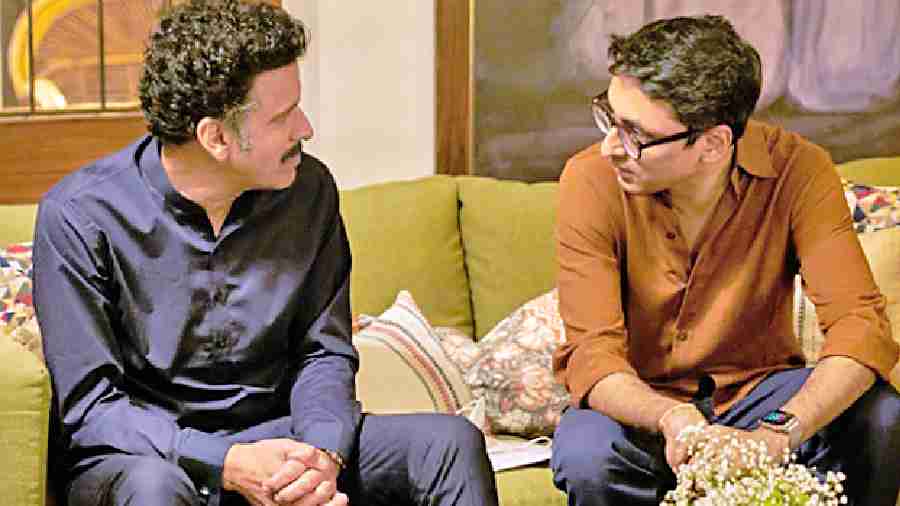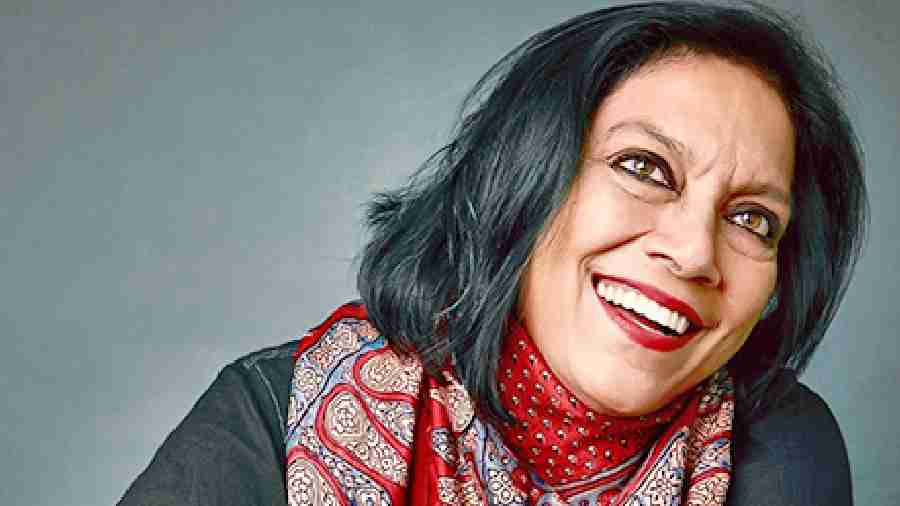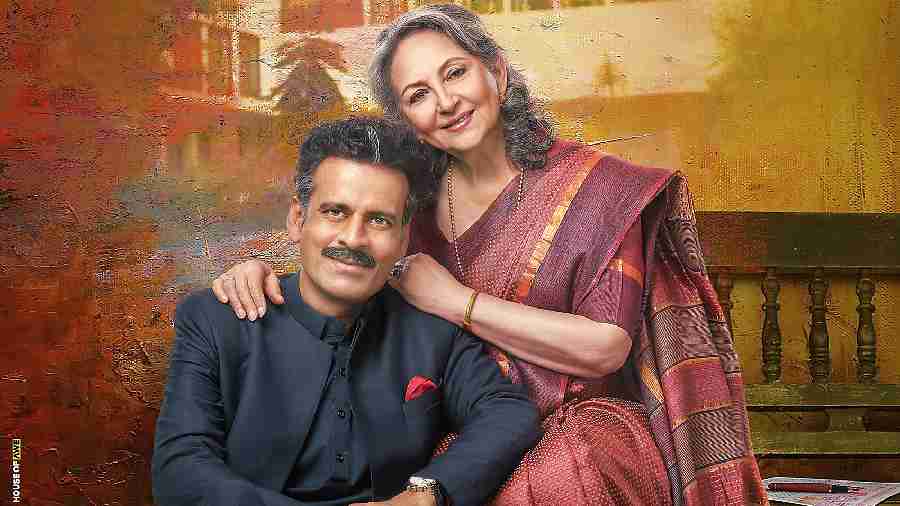There has been 95 per cent positive feedback on the trailer, which is very rare in today’s times,” Rahul V. Chittella tells me as we start talking about his film Gulmohar, which streams on Disney+Hotstar today.
The film-maker has assembled an as-good-as-it-gets cast, led by Sharmila Tagore and Manoj Bajpayee and also comprising Amol Palekar, Simran and Suraj Sharma, which looks at a family falling apart when they pack up to leave what has been their home for decades.
Chittella, who counts film-maker Mira Nair as his mentor, chatted with t2 on the process of making Gulmohar, bringing together his eclectic cast and the biggest learnings from working with Mira.
What made you want to make Gulmohar?
Well, many things. To begin with, I had a different script in mind which was ready. Mira Nair was supposed to produce it and I was going to direct. But no actor wanted to do it (smiles). I was at home once and my wife just challenged me saying: ‘Why don’t you just do a family film? That’s what sells.’ I had a meeting with my co-writer Arpita (Mukherjee) the next day and I just told her: ‘You know, we are just going to do a family film!’ That’s how it all started.
Then, of course, we got into it. We chalked out our characters, we chalked out what we wanted to say through the backdrop of a family film. I knew that I wanted to set the film in Delhi, but we were still looking for an event around which to base it. I was shuttling between Delhi and Bombay because Mira lives in Delhi and we work very closely together.
In 2019, I had gone to Mira’s house in Vasant Vihar (in Delhi) which she had just sold, and that was a house which was very close to all of us because it was literally my home when I would go to Delhi. I edited my first film, Azaad (2016), in that house. And when she sold it to the builders so that a high-rise could come up, it was a very emotional moment for all of us. When I saw the packers packing all the pictures and paintings in that house that I loved, that’s when the whole idea came to me... that let’s set our family story against the backdrop of their home being sold and the packers come in and as they pack, all the secrets start spilling out. That’s how we started writing the script.
What is it about a dysfunctional family — or at least a family on edge — that makes for such compelling viewing? The Royal Tenenbaums is one of my favourites in this sub-genre...
Gulmohar, to be honest, doesn’t really dive too much into the dysfunctionality aspect of it. We wanted this to be more of a human drama. We had these three generations of characters through which I wanted to explore what’s the meaning of family and home. There is this line in the trailer when Manoj’s (Bajpayee) character says: ‘We built this two-storeyed house with bigger rooms, but we never realised when we built our own small little homes within that.’ When that line came to me, I knew that was the story of the film, in a way.
Gulmohar is really more about how we are becoming as people and the change that generations see... what is it that we embrace and what is it we let go of. It’s more of a human drama understanding these characters of various ages and backgrounds.

Gulmohar has a winner of a cast. Were they your first choices?
Pretty much. I love working with actors. In all of Mira’s projects, starting right from The Reluctant Fundamentalist, I have been actively involved in the casting process. Sharmilaji (Tagore) was always the first choice, right from the writing stages. In fact, I wrote a lot of the situations in the film keeping her and her body language in mind. Like how she would speak and emote and walk from one place to another.
Manoj (Bajpayee) is someone I have known for a long time and I knew this would be a different part for him considering that he has always been seen as a cop or a terrorist or a gangster (smiles). I loved his film Zubeidaa and I thought he was so brilliant in that film. He’s such a brilliant actor anyway. These two actors were my first choices and the first ones I cast.
Then, I cast Simran and Suraj (Sharma). I had known Suraj for a long time. I had directed him in a small project in early 2020. I thought of Simran because I wanted to cast someone opposite Manoj who has never appeared on screen with him before. I had seen Simran in Mani Ratnam’s Kannathil Muthamittal years ago. When I was in New York, my roommate was Anand Shankar, who has now become a big director in Tamil cinema. And he introduced me to Simran’s movies with Suriya and I became a big fan of hers.
So when we were casting for Gulmohar, I wrote to my casting director: ‘There is this lady called Simran, she was very good in a lot of south Indian films. Find out where she is and, more importantly, if she can speak in Hindi.’ He called me back in half an hour and said that she’s actually a Punjabi living in Gurgaon! (Laughs) I set up a Zoom call and she only spoke in Hindi. But because I had loved her Tamil films so much, I decided to make her a Tamilian in the film. That also makes a pertinent point with what the film tries to say.
Then we held auditions for the other characters and I took my time because I wanted the right people to come in and I wanted each of them to have their singular presence on screen.

What’s been Mira Nair’s role in Gulmohar? I know that she was the first to watch the rough cut....
Mira and I are very close. We have been producing partners. I am very lucky that I have that kind of access to her... she is just a text away. The inception of the idea, as I said, cameto me when she was packing up her house. But ever since she knew I wanted to make this film and that I wanted an ensemble, she would keep warning me that ensemble films are the toughest to make.
She has been a friend to me as well as to the project and also to my entire team because we have all worked very closely together. My editor Tanupriya (Sharma) has edited A Suitable Boy for Mira. We are the same gang. So we would all share things with Mira for her to read. She was, of course, aware of the entire casting process. But she functioned more as a friend, really.
As a film-maker, what have been your biggest learnings from working with Mira?
Many! I became a producer accidentally. One of her producers backedout just two months before a project and she told me I had to produce it. I told her that I had never produced and I was a young kid back then, but she told me: ‘You have to produce!’ That was another ensemble film with Tanujaji, Shefali (Shah), Ram Kapoor and one of Rajkummar’s (Rao) first films back then.
The biggest lessonI have got from her is to be fearless. The fearlessness of takingresponsibility and also giving responsibility. She has also taught us so much about perseverance and the fact that you just can’t say ‘no’.
What’s the way forward? These are good times for out-of-the-box storytelling, right?
Very much! Five years ago, I had a two-hero script that no one wanted to do. We had the money and we hadMira producing it but we didn’t get any actors who wanted to do a twohero film. And now we see two-hero films coming back.
Everyone is now taking the risk to experiment. But I wish they would experiment more, which they will I am sure. The times are such that casting departments are being taken seriously and so is production design. Continuity, which is a very big job profile, is finally being given seriousness. And all this has happened because there is so much work happening.











